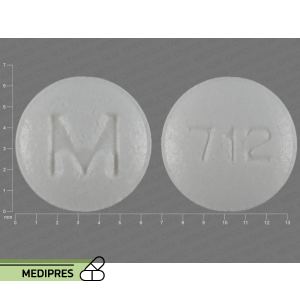
Hydrochlorothiazide and captopril
23 June, 2023
Hydrocodone and Homatropine Tablets
23 June, 2023Hydrochlorothiazide and enalapril
Generic name:
Enalapril maleate and hydrochlorothiazide
Drug class:
ACE inhibitor and thiazide diuretic combination
Dosage form:
Oral tablets (e.g., enalapril 5 mg/hydrochlorothiazide 12.5 mg, enalapril 10 mg/hydrochlorothiazide 12.5 mg, enalapril 20 mg/hydrochlorothiazide 25 mg)
Route of administration:
Oral
Dose:
- Initial: one tablet once daily (commonly enalapril 5 mg/hydrochlorothiazide 12.5 mg)
- Maintenance: may increase to enalapril 10 mg/hydrochlorothiazide 12.5 mg once daily
- Maximum: enalapril 20 mg/hydrochlorothiazide 25 mg once daily
- Adjust based on blood pressure response, renal function, and electrolyte levels
Mechanism of action:
Enalapril inhibits angiotensin-converting enzyme, reducing angiotensin II formation, decreasing vasoconstriction and aldosterone secretion. Hydrochlorothiazide inhibits sodium and chloride reabsorption in the distal convoluted tubule, increasing diuresis and reducing blood volume. The combination produces additive antihypertensive effects.
Drug usage cases:
- Essential hypertension (approved)
- Edema associated with congestive heart failure (off-label)
- Edema in nephrotic syndrome or hepatic cirrhosis (off-label)
- Left ventricular dysfunction post–myocardial infarction (off-label)
- Diabetic nephropathy (off-label)
Drug contraindications:
- History of angioedema related to previous ACE inhibitor therapy
- Hypersensitivity to enalapril, hydrochlorothiazide, or other sulfonamide-derived drugs
- Anuria or severe renal impairment (creatinine clearance <30 mL/min for HCTZ)
- Bilateral renal artery stenosis
- Pregnancy (especially second and third trimesters)
- Breastfeeding
- Hyperkalemia >5.5 mEq/L
Side effects:
- Cough
- Dizziness, lightheadedness, orthostatic hypotension
- Hyperkalemia or hypokalemia
- Hyponatremia
- Renal impairment, acute kidney injury
- Fatigue, headache
- Gastrointestinal upset (nausea, diarrhea)
- Photosensitivity
- Rash, pruritus
- Aggravation of gout (hyperuricemia)
- Electrolyte disturbances (magnesium, calcium)
- Muscle cramps
- Pancreatitis (rare)
- Thrombocytopenia, leukopenia (rare)
Warnings:
- Risk of symptomatic hypotension; start at low dose in volume-depleted patients
- Monitor renal function and electrolytes periodically
- Avoid in patients with bilateral renal artery stenosis or severe renal dysfunction
- Use with caution in hyperuricemia or gout
- Risk of electrolyte imbalance; supplement or adjust diuretic therapy as needed
- Avoid concomitant use with potassium-sparing diuretics, potassium supplements, or salt substitutes containing potassium
- May impair glucose tolerance; monitor diabetic patients
- Potential for lithium toxicity if used concurrently
- Photosensitivity reactions possible; advise sun protection
Use during pregnancy or breastfeeding:
ACE inhibitors are associated with fetal toxicity (hypotension, neonatal renal failure, skull hypoplasia) when used in the second and third trimesters. Discontinue as soon as pregnancy is detected. Hydrochlorothiazide crosses the placenta and may cause fetal or neonatal complications (jaundice, electrolyte disturbances). Both agents are excreted in breast milk; avoid combination therapy during breastfeeding. Consider alternative antihypertensives with safer profiles in pregnancy and lactation.



